
Matera is probably the most beautiful city in Italy. All because of the amazing view of the city carved in the rock, situated above the steep Gravina gorge. The cobbled streets intersected with a maze also add charm. Check out what attractions the city has to offer!
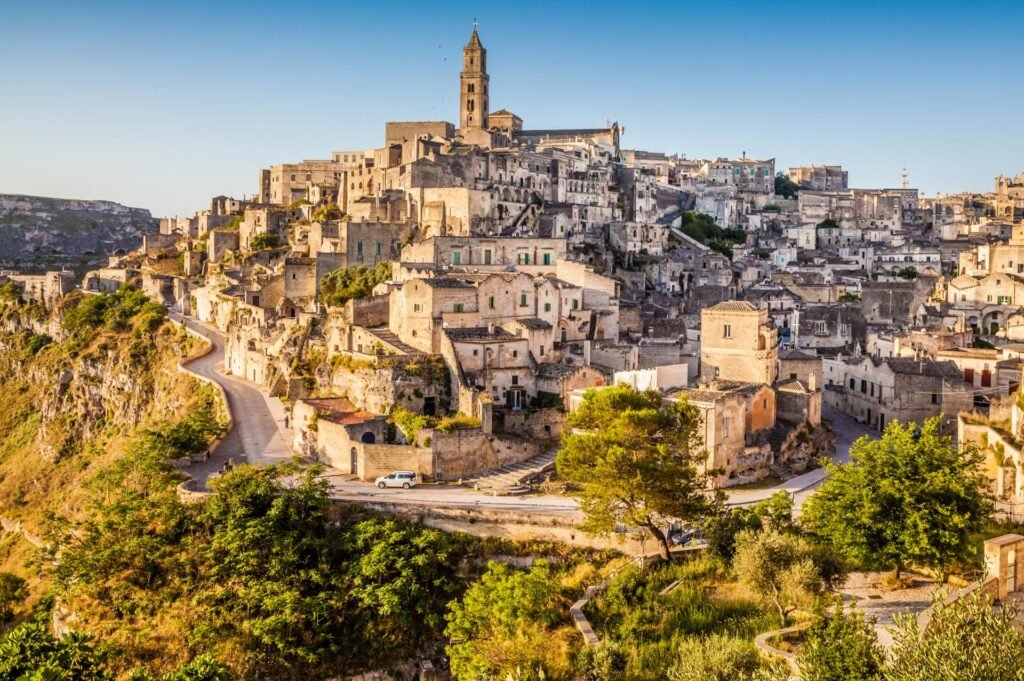
History
It is worth remembering that Matera’s extremely long history is far from the cozy atmosphere that we appreciate so much today. Living in these stone caves, often damp, carved in the limestone rock, without sewage or heating, was once quite a challenge. Poverty and mortality were the most common terms used to characterize Matera until the mid-20th century. Such living conditions often caused diseases. I read in a Travel Magazin article that in the 1940s, as many as 50% of newborn children died there.
This situation finally prompted the government to take radical action. In the 1950s, a law was introduced ordering Matera’s residents to leave the old neighborhoods and move to more modern buildings. It is debatable whether such a reaction brought the expected effect. It was only in the 1980s that renovation works on abandoned houses began. Currently, people live in some of them again, and others have been transformed into hotels and guesthouses, restaurants (we had dinner in one) and the already mentioned art galleries.
It is an extraordinary story from national shame and disgrace in the 1950s, through inclusion on the UNESCO heritage list in 1993 (the first for the south of Italy) to the proud title of Cultural Capital of Europe in 2019.
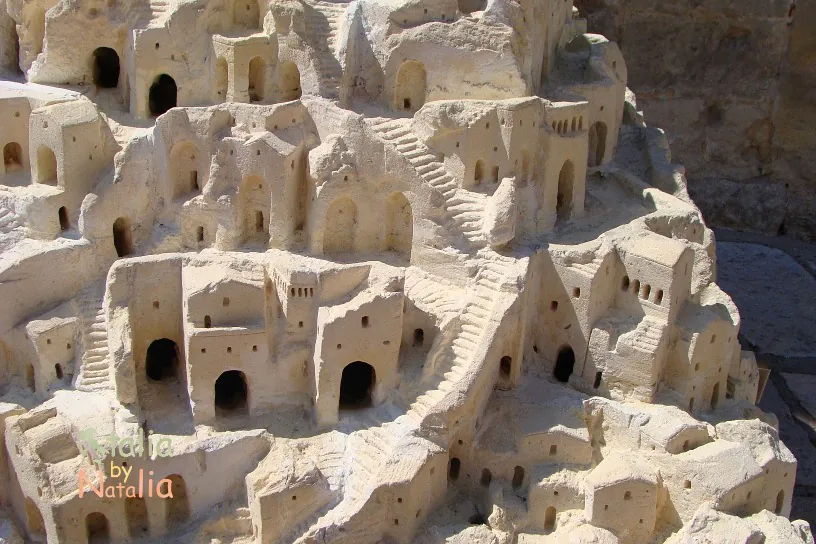
Matera – Film Scenery
Due to its location and architectural resources, Matera is often chosen as a film setting. The most famous films shot here are “The Passion of the Christ” by Mel Gibson, “The Gospel According to St. Matthew” by Pasolini, “Ben-Hur” (from 2016). Its otherworldly and ancient beauty is compared to Jerusalem, and in fact, in many productions it is stylized as this city. Matera, as a city carved in rocks, is also one of the places where “No Time to Die” from the James Bond series was filmed.
City Of A Million Stairs
Matera is the city of a million stairs , if you don’t like climbing and walking on stairs, you may have enough of sightseeing in Matera. It’s best to wear comfortable shoes and easily explore every nook and cranny cities.
Sassi di Matera
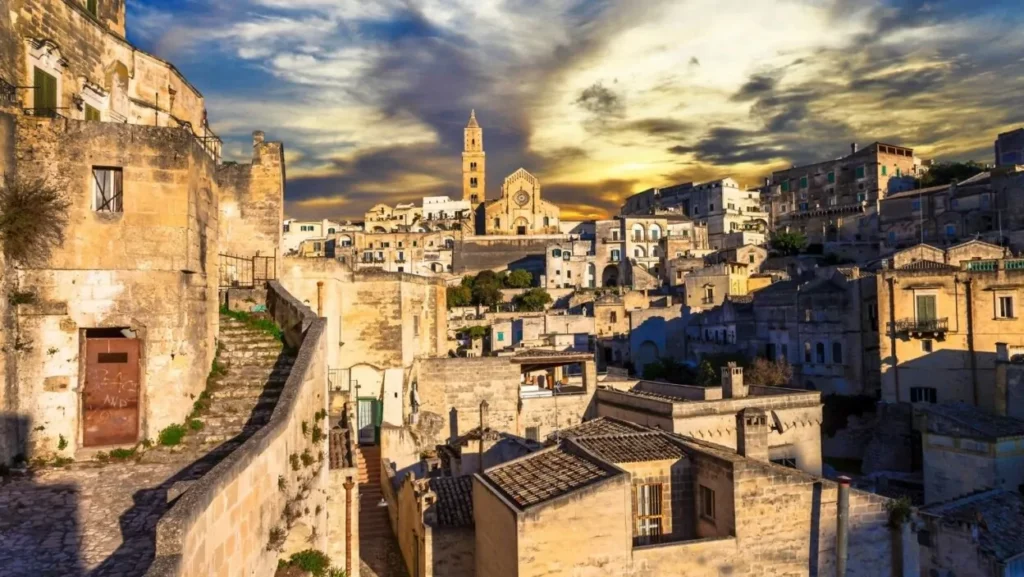
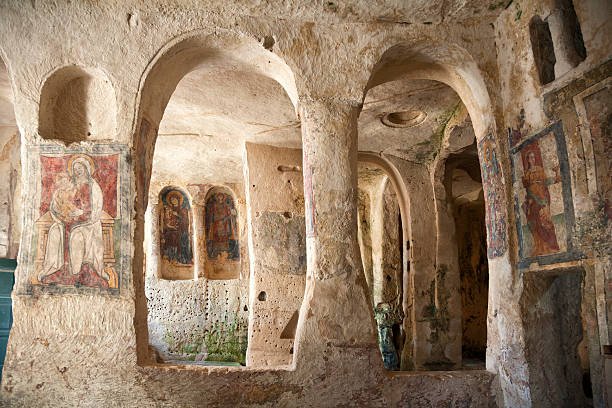
Sassi is the city’s main attraction. Actually, there are two districts – Sasso Caveoso and the newer Sasso Barisano. Caveoso – cave, is the one in which there are caves carved in the rock, where life has been going on for hundreds of thousands of years, until modern times. Yes, although it is hard to believe, people still lived there in the 1950s.
At one point, the rulers of Italy stated that it was unacceptable for people in the mid-20th century to live as they did hundreds of years ago – in caves, without sewage or electricity, but together with animals. Illiteracy and malaria were rampant, and Matera became a symbol of the backwardness of southern Italy. New districts, houses, housing estates were built and “cavemen” were evicted there. Matera has been on the UNESCO World Heritage List since 1993, and in 2019 it will be the world capital of culture.
Murgia Materana Regional Park
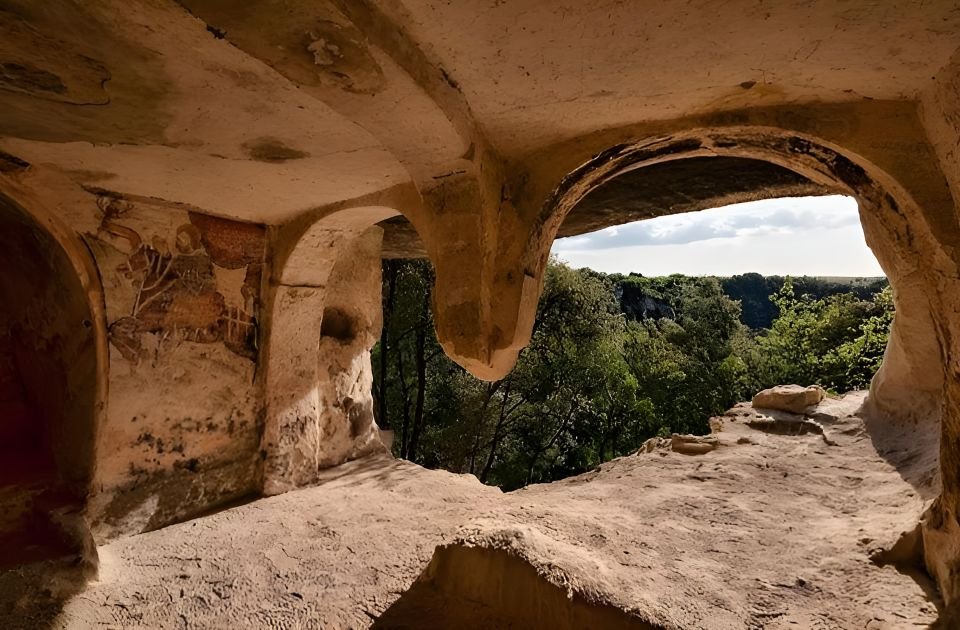

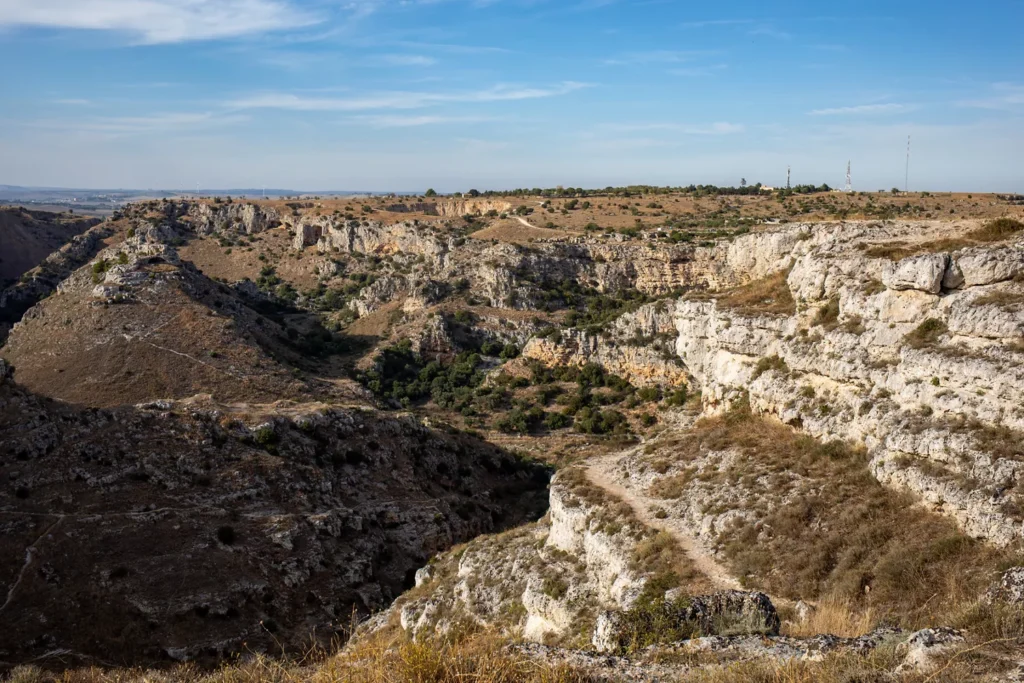
The Murgia Park was established in 1990 with the name of the Regional Archaeological, Historical and Natural Park of the Rupestrian Churches of Matera. Today, among the spectacular rock landscapes of Italy, it is the one that best testifies to the ancient relationship between man and nature. The park, which rises between the municipalities of Matera and Montescaglioso in Basilicata, a few kilometers away from the border with Puglia, is characterized by a soft rock, the so-called “tuff” (the exact name is calcarenite), which has an essential role in the forms taken by the landscape, designing cliffs, valleys and caves used by man who has settled there since prehistoric times.
Palombaro lungo
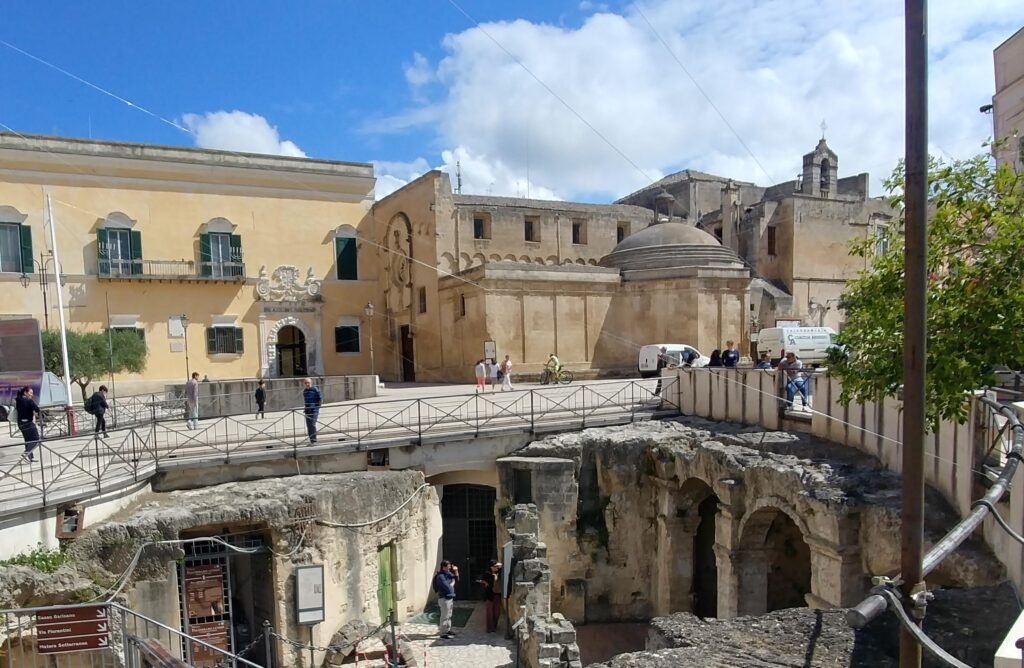
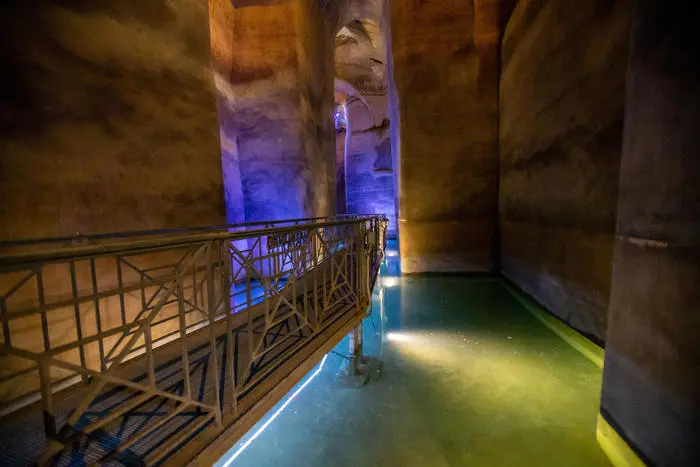

This giant cistern, arguably as magnificent as a subterranean cathedral, is one of Matera’s great sights. Lying under the city’s main square with arches carved out of the existing rock, it is mind-boggling in its scale and ingenuity, and was still supplying water to Materans within living memory. Book ahead for a 25-minute tour with the multilingual guides, who explain its conception and history (English-language tours generally leave at 10.30am, 12.30pm, 3.30pm and 5.30pm).
Casa Grotta nei Sassi di Matera
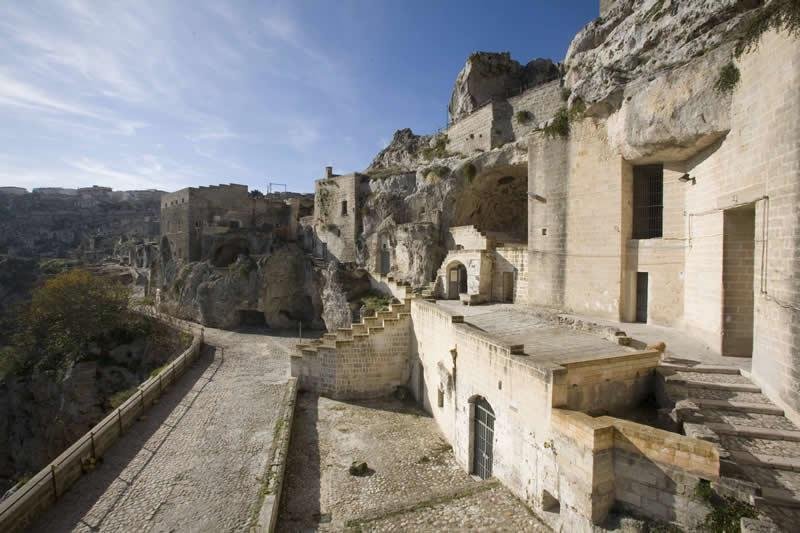
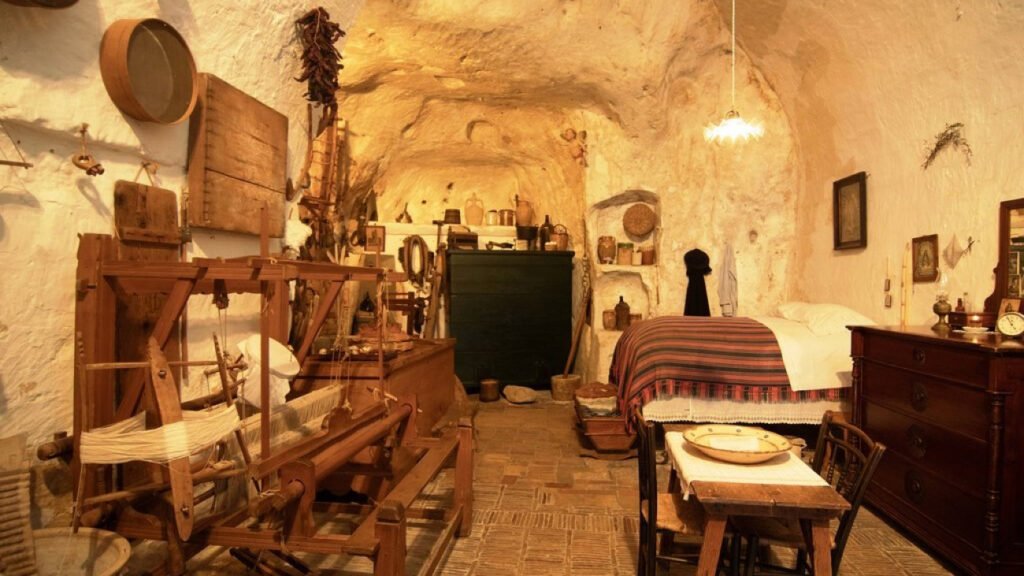
The Casa Grotta is the typical Sassi house created partially by digging into the rock and partially built. In the Casa Grotta del Casalnuovo it is possible to live the experience of a real Sassi house through its original furnishings and the everyday tools that the family who lived there used in everyday life until 1958. It is a true ethnographic collection, a small museum with objects of common use and work from the times in which the Sassi were inhabited, before the depopulation which occurred in the 1950s. Inside, the original rooms and furnishings of the house have been reconstructed before the ancient districts were depopulated at the end of the 1950s.
Church of Saint Mary of Idris
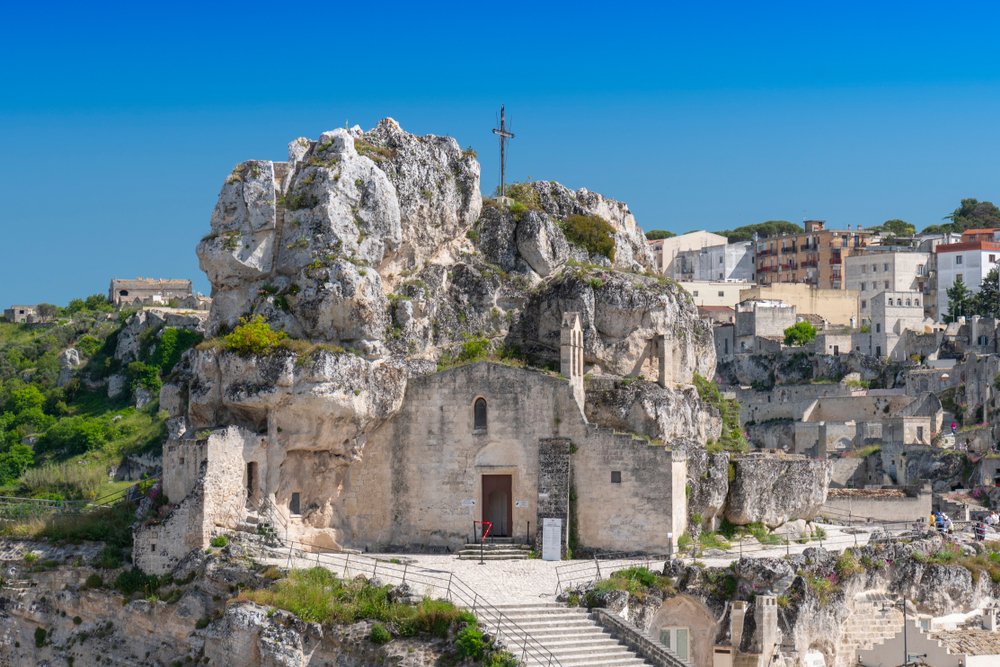
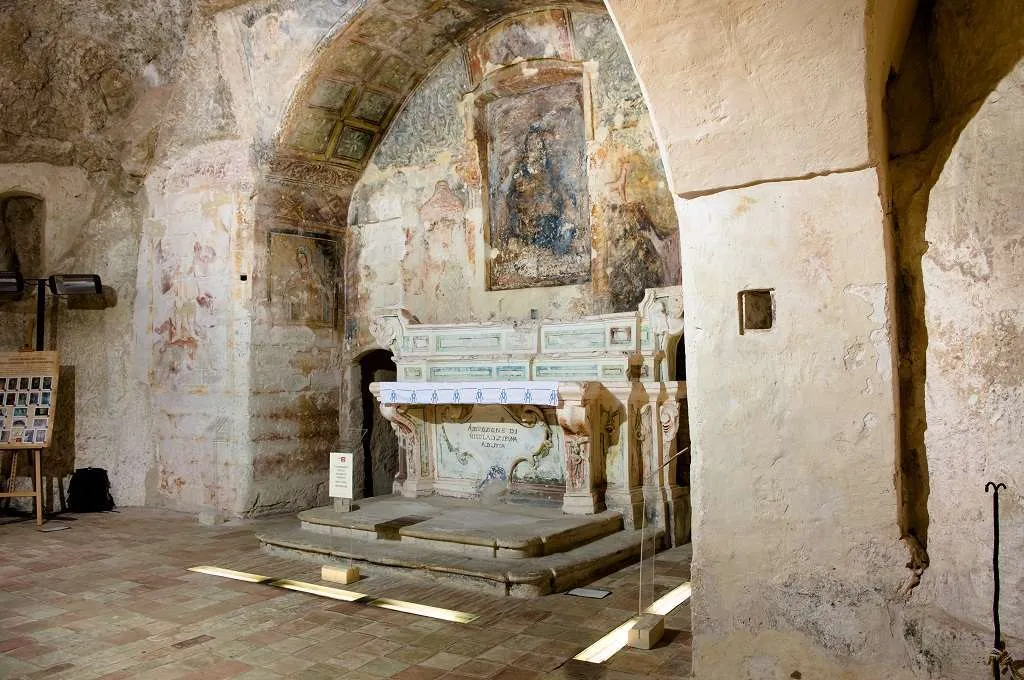
The Church of Saint Maria of Idris is a rupestrian church in Matera. It is carved into a limestone rock of Monterrone that dominates the Sasso Caveoso. The beautiful location offers a unique view of the city. The church can be reached via stairs to the rock Church of Santa Lucia alle Malve. “Idris” is derived from the Greek “Odigitria,” “who shows the way.”
Palazzo Lanfranchi
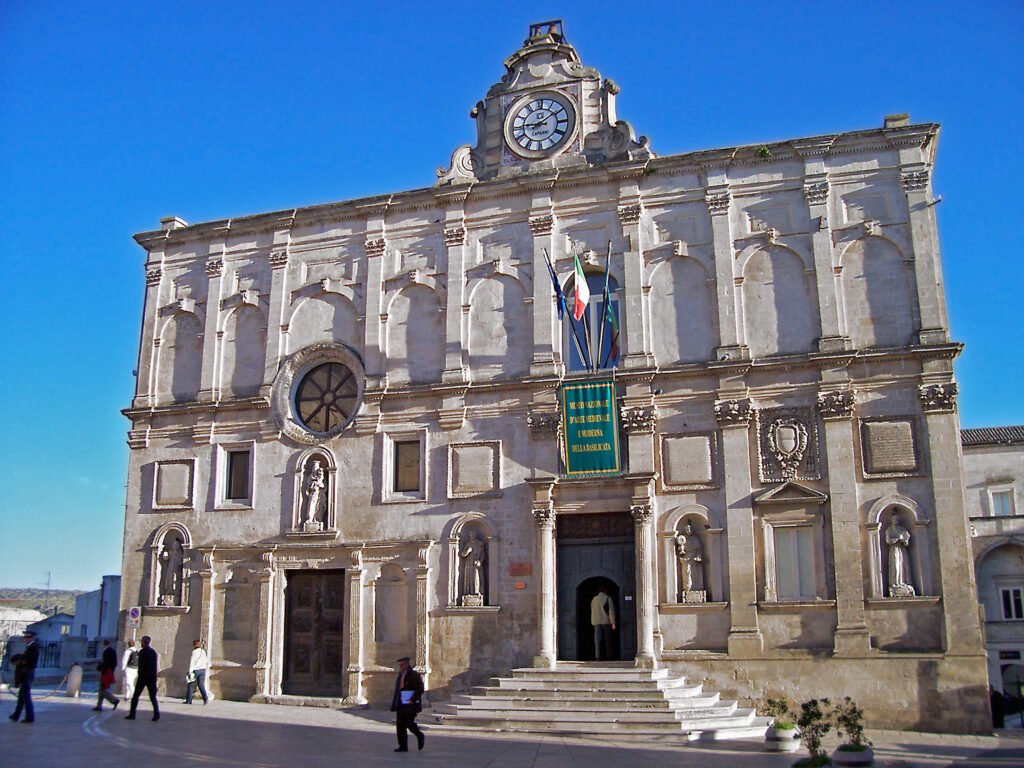
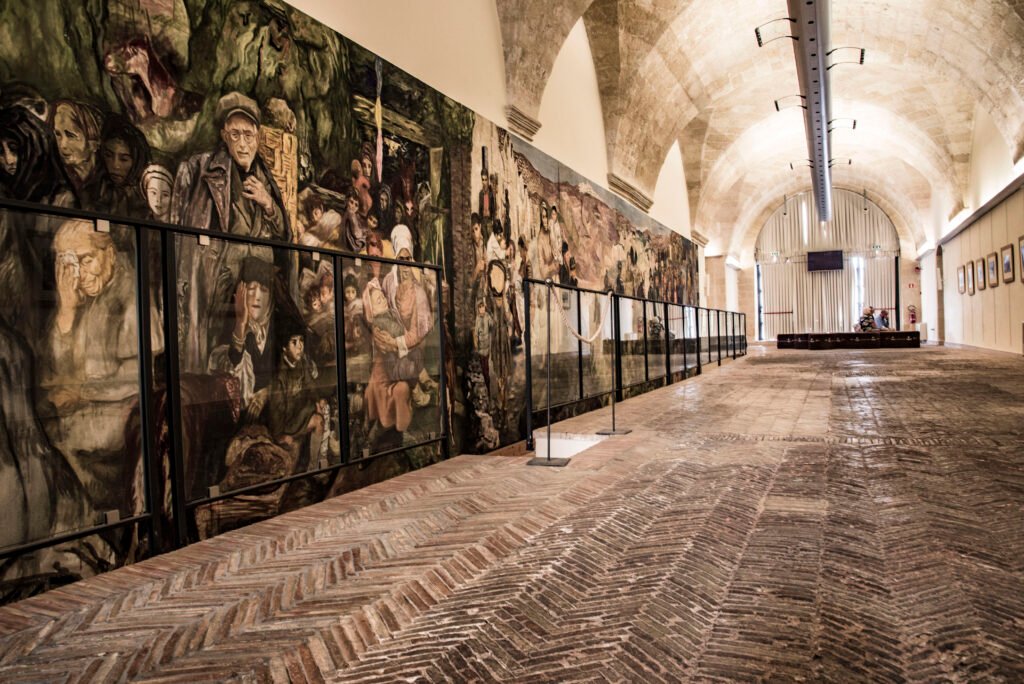
Considered the most representative Baroque building in Matera, Palazzo Lanfranchi was built in 1668 at the order of Bishop Vincenzo Lanfranchi according to Tridentine dictates to house the diocesan seminary. The design of the main façade on Via Ridola and the layout of the rooms on two floors around a central cloister is the work of Capuchin friar Francesco da Copertino.
Cathedral of Matera
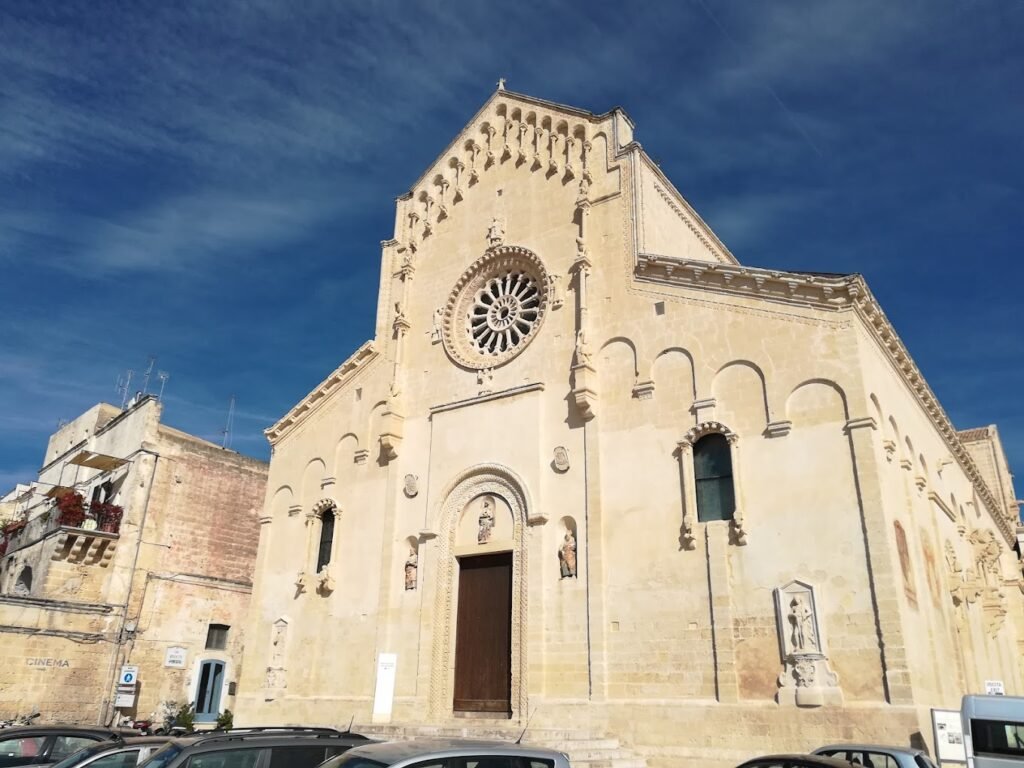
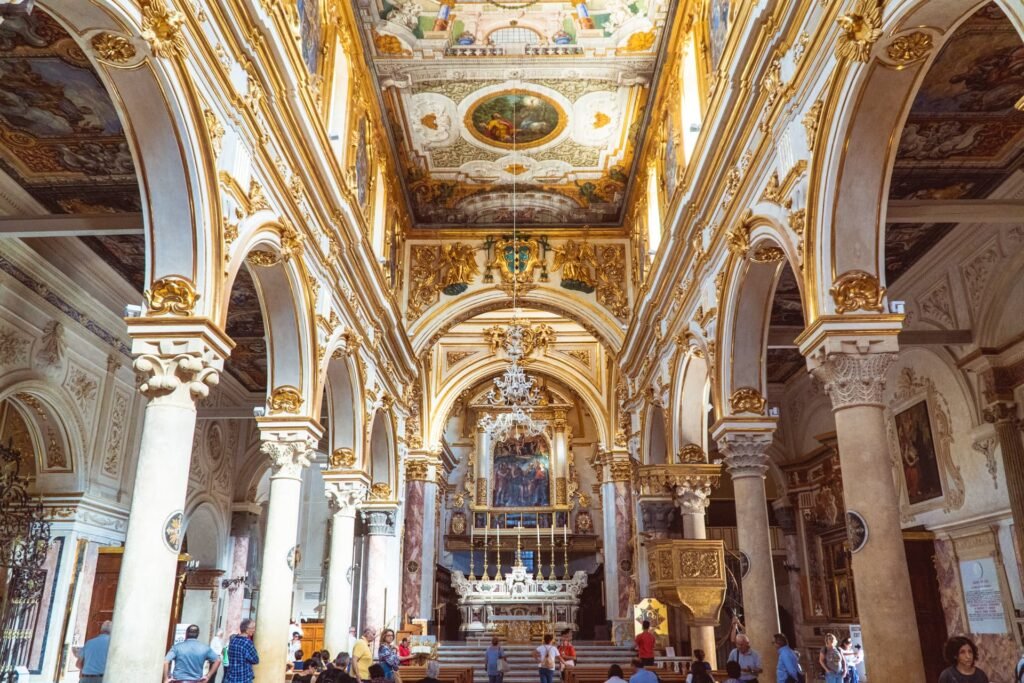
The Cathedral of the Madonna della Bruna and Sant’Eustachio is the Cathedral of Matera, dedicated to the Virgin Mary, the patron saint of the city, and to the Christian martyr Saint Eustace. The church is located on the highest point of the old city, between the two Sassi, the ancient districts of Matera. The Cathedral of Matera is located about 1 kilometer away from the Stazione Centrale, the city’s train station. From the Central Station, you can take one of the buses of Linea Sassi, to get to Piazza San Pietro Barisano, about 300 meters away from the church.
Musma Matera – Museo Della Scultura Contemporanea
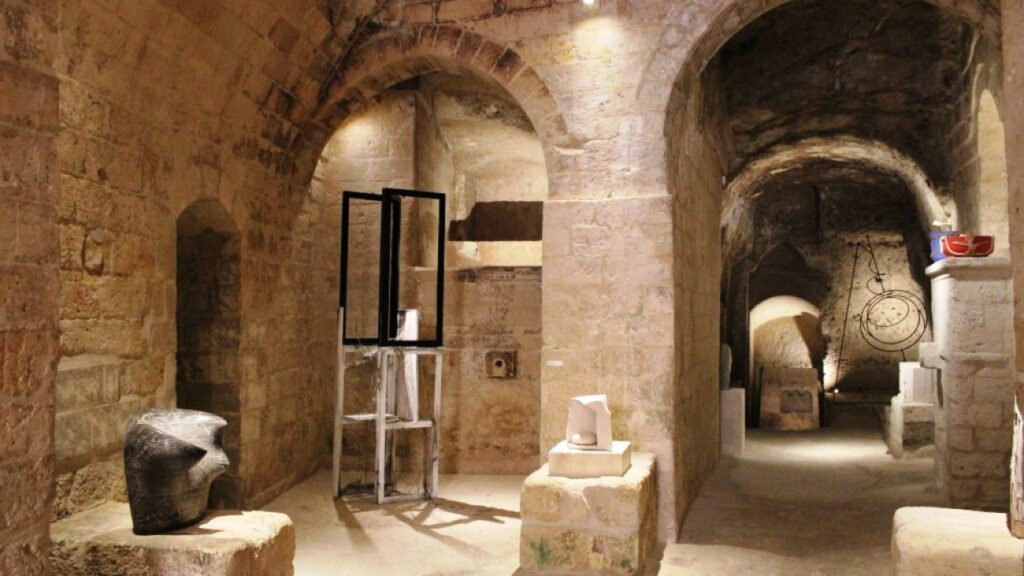
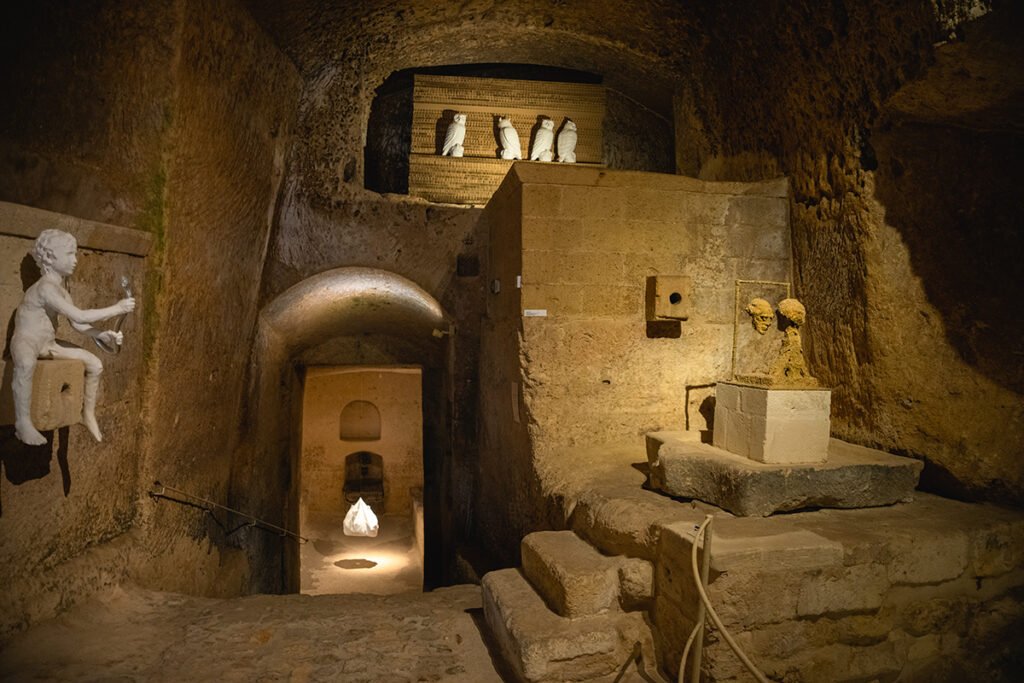
MUSMA Museum of Contemporary Sculpture Matera: The ancient Sassi districts of Matera, in Basilicata, host the MUSMA Museum of Contemporary Sculpture Matera, the only Italian museum entirely dedicated to sculpture. The museum is inserted in the evocative setting of the seventeenth-century Palazzo Pomarici which, spread over three levels and a surface area of approx. 2929, still today, due to its imposing size, is defined by the collective imagination as the Palace of One Hundred Rooms.
The rich corpus of around 400 works including sculptures, ceramics, multiples, jewels, medals, drawings, engravings, art books which illustrates the history of Italian and international sculpture from the end of the 1800s to today is housed not only in the built areas of the palace but also in large rock rooms, centuries-old environments dug by man which make the MUSMA the only cave museum in the world.
